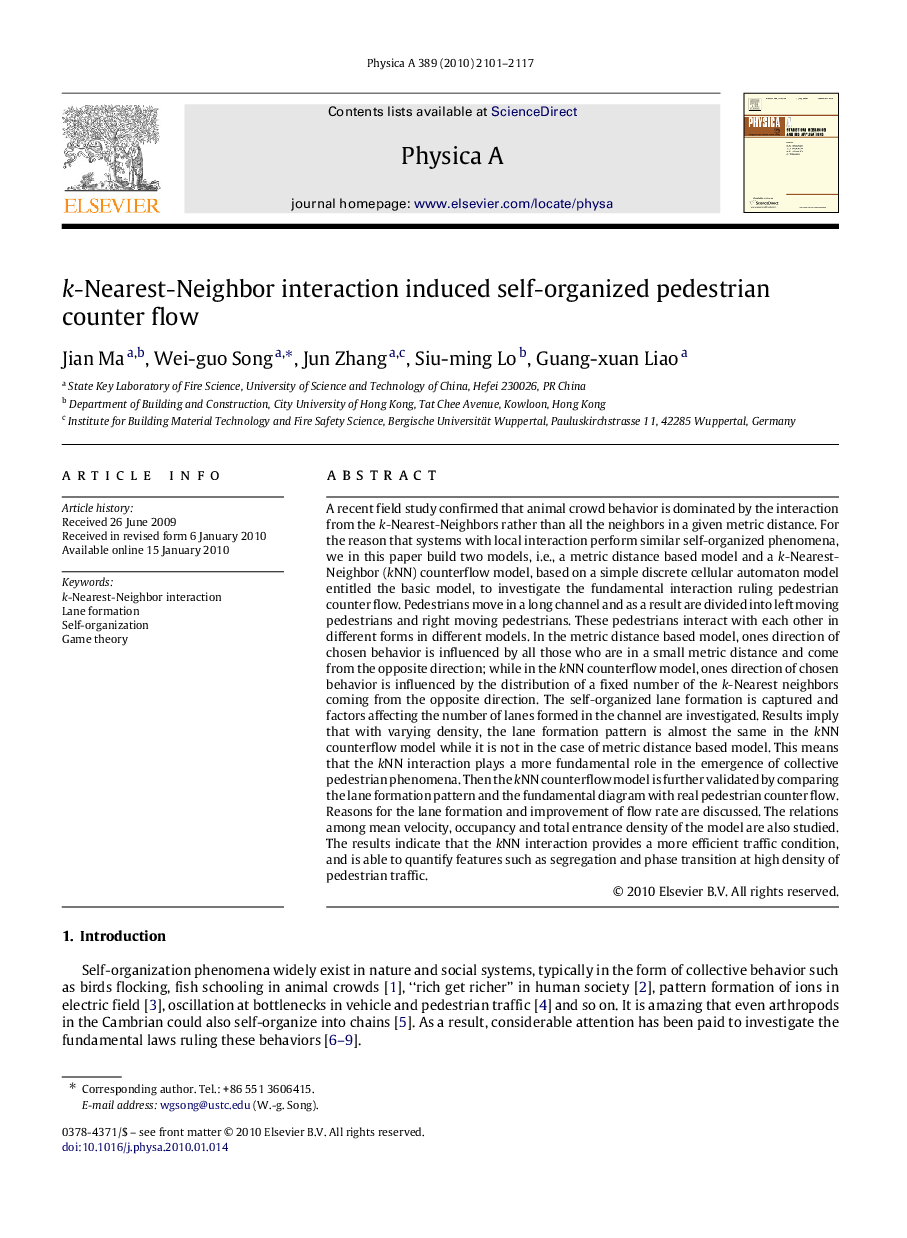| کد مقاله | کد نشریه | سال انتشار | مقاله انگلیسی | نسخه تمام متن |
|---|---|---|---|---|
| 974383 | 932973 | 2010 | 17 صفحه PDF | دانلود رایگان |

A recent field study confirmed that animal crowd behavior is dominated by the interaction from the kk-Nearest-Neighbors rather than all the neighbors in a given metric distance. For the reason that systems with local interaction perform similar self-organized phenomena, we in this paper build two models, i.e., a metric distance based model and a kk-Nearest-Neighbor (kkNN) counterflow model, based on a simple discrete cellular automaton model entitled the basic model, to investigate the fundamental interaction ruling pedestrian counter flow. Pedestrians move in a long channel and as a result are divided into left moving pedestrians and right moving pedestrians. These pedestrians interact with each other in different forms in different models. In the metric distance based model, ones direction of chosen behavior is influenced by all those who are in a small metric distance and come from the opposite direction; while in the kkNN counterflow model, ones direction of chosen behavior is influenced by the distribution of a fixed number of the kk-Nearest neighbors coming from the opposite direction. The self-organized lane formation is captured and factors affecting the number of lanes formed in the channel are investigated. Results imply that with varying density, the lane formation pattern is almost the same in the kkNN counterflow model while it is not in the case of metric distance based model. This means that the kkNN interaction plays a more fundamental role in the emergence of collective pedestrian phenomena. Then the kkNN counterflow model is further validated by comparing the lane formation pattern and the fundamental diagram with real pedestrian counter flow. Reasons for the lane formation and improvement of flow rate are discussed. The relations among mean velocity, occupancy and total entrance density of the model are also studied. The results indicate that the kkNN interaction provides a more efficient traffic condition, and is able to quantify features such as segregation and phase transition at high density of pedestrian traffic.
Journal: Physica A: Statistical Mechanics and its Applications - Volume 389, Issue 10, 15 May 2010, Pages 2101–2117